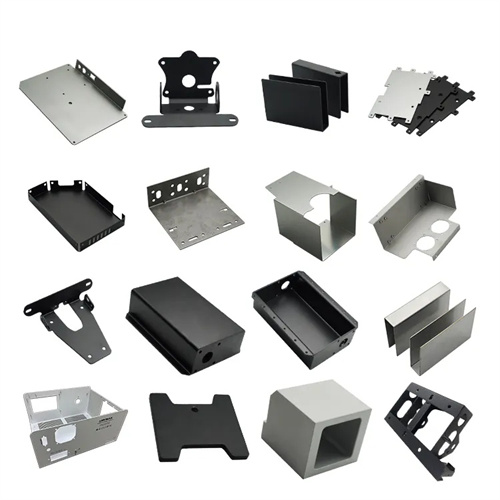Calculation of Drawing Times of Multi-station Progressive Die
Calculating the number of draw cycles for a multi-station progressive die is a key factor in determining the feasibility of the drawing process. This requires comprehensive consideration of the part’s shape parameters, material properties, and the die’s station limitations. Scientific formula derivation and empirical corrections are used to determine the appropriate number of draw cycles and the amount of deformation at each station. Unlike single-stage drawing, progressive die drawing requires balanced deformation at each station to avoid material fracture caused by excessive deformation at any one station. Furthermore, the coordination between the drawing process and other processes (such as punching and trimming) must be ensured.

The primary basis for calculating the number of drawing cycles is the part’s total drawing coefficient and the material’s limit drawing coefficient. The total drawing coefficient, mtotal, = finished product diameter d / blank diameter D. If mtotal exceeds the material’s first limit drawing coefficient (e.g., m1 = 0.5-0.55 for mild steel), the part can be drawn in a single step; otherwise, multiple drawing cycles are required. In a progressive die, the drawing coefficients for each step must be assigned in descending order, and each drawing coefficient, mi, must exceed the corresponding limit value (m2 = 0.7-0.75, m3 = 0.75-0.8, increasing by 0.05 each time). For example, for a flanged cylindrical part (d = 20 mm, D = 100 mm), with mtotal = 0.2, four drawing cycles are required. The coefficients for each step can be 0.5, 0.65, 0.7, and 0.92 (0.5 × 0.65 × 0.7 × 0.92 ≈ 0.2).

The part height-to-diameter ratio (h/d) is a key parameter used to determine the number of deep drawing cycles. For cylindrical parts, a single deep drawing cycle is sufficient when h/d ≤ 0.6; two deep drawing cycles are required when h/d = 0.6-1.0; three-four deep drawing cycles are required when h/d = 1.0-2.0; and five or more deep drawing cycles are required when h/d > 2.0. For parts with flanges, the ratio of flange diameter to barrel diameter (d1/d) must also be considered. A larger d1/d ratio requires more deep drawing cycles. For example, a part with h/d = 2.5 and d1/d = 2.0 requires one to two more deep drawing cycles than a flangeless part with the same h/d ratio to control deformation uniformity in the flange area. In a progressive die, the total height must be divided according to the number of deep drawing cycles, and the height increments must be gradually reduced to prevent material flow problems during later drawing.

The plasticity indexes of the material (such as elongation δ and yield strength ratio σs/σb) have a significant influence on the number of deep drawing operations. Materials with high elongation and low yield strength ratio (such as low carbon steel δ=30%, σs/σb=0.5) have good plasticity and can use fewer deep drawing times; while high strength steel (δ=15%, σs/σb=0.7) requires 1-2 more deep drawing times. When drawing with a progressive die, an annealing process must be set between each drawing according to the hardening characteristics of the material (for example, stainless steel needs to be bright annealed after three drawing cycles) to restore the plasticity of the material and avoid cracking due to work hardening. Therefore , annealing stations need to be reserved when calculating the number of deep drawing. If the mold stations are limited, the number of deep drawing can be reduced by reducing the deep drawing coefficient each time, and lubrication can be strengthened to reduce deformation resistance.

The number and layout of stations in a progressive die are practical constraints on calculating the number of draws. If the die has a maximum of 10 stations, the number of draws must be limited to 8 (reserving 2 stations for punching and trimming). When the theoretically calculated number of draws exceeds the station limit, the draw coefficient distribution should be optimized, using a larger initial draw coefficient (for example, from 0.5 to 0.55) to reduce subsequent draws. Deformation resistance can also be reduced by increasing the die corner radius (rconcave = 10-15t). For deep cylindrical parts, a reverse drawing process can be used to achieve greater deformation with the same number of stations. The reverse drawing coefficient can be 0.1-0.15 smaller than that of forward drawing, thereby reducing one or two draws.

Verification and adjustment of the drawing cycle should be conducted in conjunction with test punching results. After the initial test punching, if significant thinning (thinning rate > 20%) or cracking of the barrel wall is observed, the drawing cycle should be increased. If wrinkling occurs on the flange or the verticality of the barrel section is out of tolerance, the drawing coefficient at the corresponding station should be reduced and the blank holder force increased. Each drawing station in the progressive die should be equipped with a dimensional inspection point. By measuring the diameter, height, and wall thickness after each drawing, the drawing parameters for subsequent processes should be adjusted. For example, if the diameter after a certain drawing cycle is 0.2 mm larger than the calculated value, the next drawing coefficient should be adjusted from 0.7 to 0.68 to ensure the final dimensions meet the requirements. By combining theoretical calculations with test punching adjustments, the optimal drawing cycle can be determined to ensure a stable and reliable progressive die drawing process.
